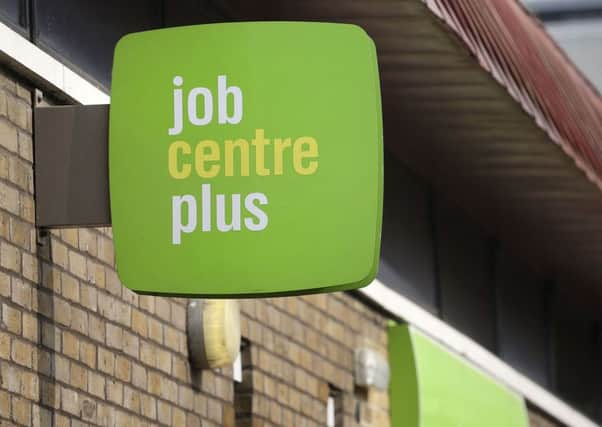Unemployment rises but figure remains at near record low


But while the figures show that the number of people out of work remains at a near record low, the employment rate, the percentage of working age adults in a job, fell by 0.3 percentage points to 69.3% compared to a UK average rate of 75.5%.
The data from the Northern Ireland statistics agency NISRA for the period from May to July highlights once again the disparity between the province’s positive growth in jobs but the disappointing level of people not in work compared to other UK regions.
Advertisement
Hide AdAdvertisement
Hide AdHowever, Ulster Bank chief Northern ireland economist Richard Ramsey said the the summer highs outweighed the lows.
“Despite this increase in the headline rate, the unemployment rate for those aged over 50 years of age plumbed an all-time low of 3.0% as more move into work,” he said.
“The number of individuals aged 50+ in employment reached an all-time-high in the three-months to July and jumped by almost 10% year on year (y/y).
“Meanwhile there were even steeper rises for those aged 60 (females) / 65 (males) with the numbers working within this age-group surging by one-third over the last year.
Advertisement
Hide AdAdvertisement
Hide Ad“Conversely the number of individuals aged under 50 (18-49 years) fell marginally over the last twelve months. Once again this reinforces a trend that we have been seeing in recent years, namely, the ‘greying of the labour market’. Indeed, almost one in eight of all pensioners aged over 65 years were still working in some shape or form.
Referring to the Quarterly Employment Survey, Mr Ramsey pointed out that it had hit a record high in June.
“This represented the tenth consecutive quarter of employment growth with a net gain of almost 36,000 jobs in just two-and-a-half years.
“During the latest quarter, job creation was broad-based across the private sector with the public sector also increasing its headcount (+1,010).
Advertisement
Hide AdAdvertisement
Hide Ad“Indeed, it was the first quarter in four years that the public sector created more jobs than the private sector.”
Both saw record highs in the second quarter (Q2) he said, with the manufacturing sector seeing the highest number of jobs in 16 years. At the same time, he said construction was approaching an eight-year high.
However, alongside that, the issue of productivity remained the elephant in the room.
“Some 81,000 private sector jobs have been created since the post-downturn low of Q1 2012. This represents a gain of 17%. Despite this growth, it is worth remembering that private sector output remains (as of Q1 2018) some 5% *lower* than a decade ago. This is despite an additional 44,000 jobs (mostly services) contributing to private sector output. Clearly this underscores Northern Ireland’s productivity problem and highlights the preponderance of low quality jobs in the recovery so far. If Northern Ireland is to address its longstanding productivity deficit it is quality not quantity that counts.”